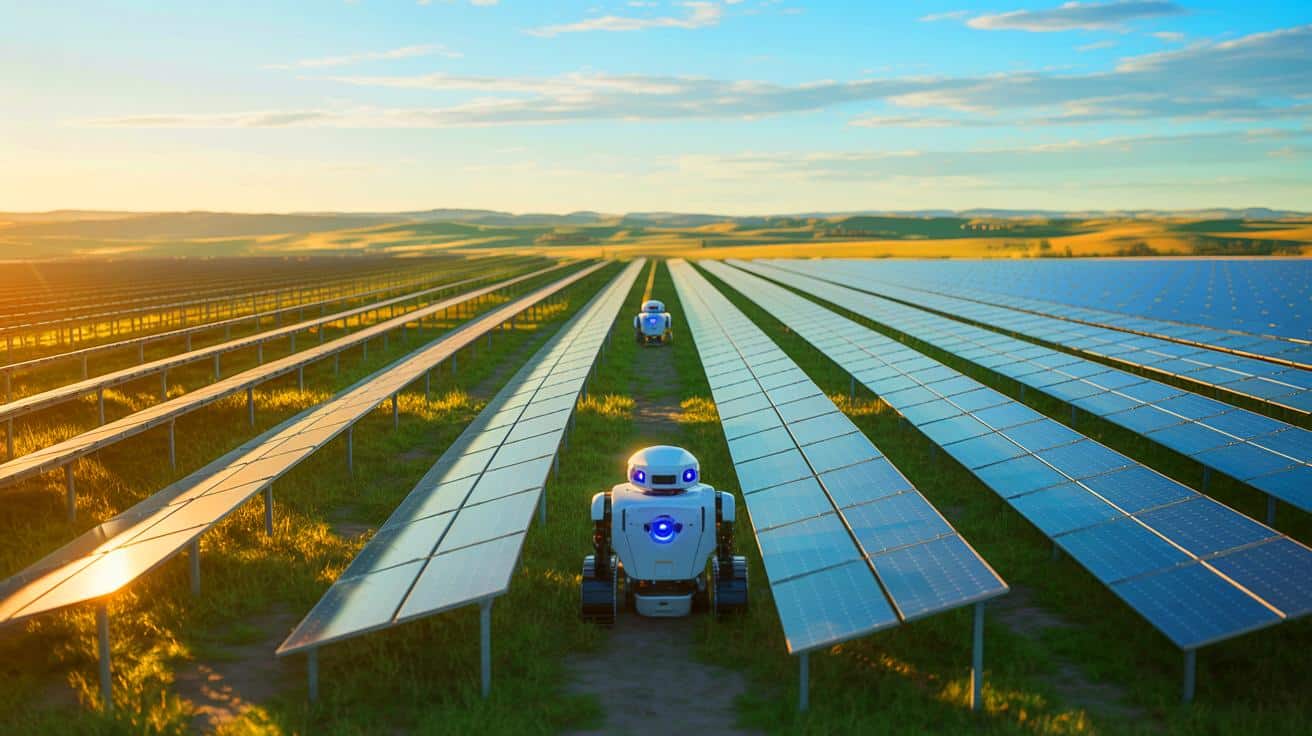- 🤖 The integration of AI-powered robots is revolutionizing solar panel installation at a solar farm in Victoria, Australia.
- 💡 Luminous Robotics’ LUMI S4 fleet enhances efficiency by automating the placement of solar modules.
- 🌍 These advancements could lower energy costs for consumers and expedite the shift to renewable energy.
- 📊 The project serves as a blueprint for future solar developments globally, showcasing the potential of robotics.
In the heart of Victoria, Australia, a groundbreaking project is accelerating the transition to renewable energy. At the Goorambat East Solar Farm, an innovative fleet of robots is reshaping the landscape of solar panel installation. Developed by Luminous Robotics, these AI-powered machines are rapidly deploying nearly 500,000 solar panels, setting a new benchmark for speed and efficiency. As the world leans towards cleaner energy solutions, this project signifies a pivotal step towards more accessible and cost-effective solar power, highlighting the transformative potential of robotics in the energy sector.
Robots Boost Solar Power
Luminous Robotics, a U.S.-based company, has pioneered the development of autonomous robots designed to revolutionize solar farm construction. With a significant investment of $4.9 million from the Australian Renewable Energy Agency (ARENA), these robots are set to transform the industry. The LUMI S4 fleet utilizes advanced AI-driven pick-and-place technology, autonomously lifting and positioning solar modules onto racking structures. This reduces the physical strain on human workers, allowing them to focus on more skilled tasks.
Located near Benalla, approximately 130 miles northeast of Melbourne, the Goorambat East site is the first international deployment of LUMI robots. This marks a significant milestone for Luminous Robotics, showcasing the global potential of these machines. By automating one of the most labor-intensive aspects of solar farm construction, the robots enhance both safety and efficiency. According to Justin Webb, ENGIE site representative, this increased productivity could significantly lower the cost of renewable energy projects, ultimately reducing energy costs for consumers.
Reshaping Clean Energy
The integration of robotics into solar farm construction is not only about efficiency but also about fostering a skilled workforce. The LUMI robots require skilled technicians, thereby creating new job opportunities in the renewable energy sector. This shift is particularly beneficial in remote and harsh regions, where working conditions can be challenging. By reducing the need for manual handling of heavy solar panels, these robots minimize health and safety risks, making the construction process safer for workers.
Jay M. Wong, CEO and founder of Luminous Robotics, emphasized the importance of the data and insights gained from the Australian deployment. The performance of the LUMI fleet exceeded expectations, providing valuable information that will support global adoption. With continued development, these robots could play a crucial role in democratizing solar energy, making it more accessible to communities worldwide.
Economic and Environmental Impact
The economic implications of deploying robotic technology in solar farms are substantial. By reducing construction time and labor costs, these machines can make solar energy projects more financially viable. This could lead to an increase in the number of solar farms, contributing to a more sustainable energy grid. Furthermore, the environmental benefits are significant. By facilitating the rapid deployment of solar panels, robots can accelerate the shift away from fossil fuels, reducing carbon emissions and contributing to global climate goals.
ENGIE’s Goorambat East Solar Farm, with its 250-megawatt capacity, is a prime example of this potential. Once completed, it will supply electricity to over 100,000 homes, demonstrating the scalability of robotic solutions in the energy sector. As commissioning progresses, the success of this project could serve as a blueprint for future solar developments globally.
Future Prospects
The future of solar panel installation looks promising with the continued advancement of robotic technology. Luminous Robotics and ARENA are on the verge of releasing a comprehensive robotics dataset to the public, which could spur innovation and collaboration. By making this data available, they aim to democratize solar technology, enabling more communities to benefit from clean energy. This open-source approach could accelerate advancements in robotic capabilities, paving the way for even more efficient solar installations.
As the world grapples with the challenges of climate change, the integration of robotics in renewable energy projects offers a glimpse of hope. By reducing costs and increasing efficiency, these machines could play a pivotal role in the global transition to sustainable energy. The question remains: How quickly can other regions adopt similar technologies to meet their energy needs?
As we witness the transformative impact of robotics in solar installations, the potential for further innovation in the energy sector seems limitless. With continued investments in technology and workforce development, the future of clean energy looks brighter than ever. How will other industries leverage robotics to drive sustainability and efficiency in the coming years?
This article is based on verified sources and supported by editorial technologies.
Did you like it? 4.4/5 (20)
